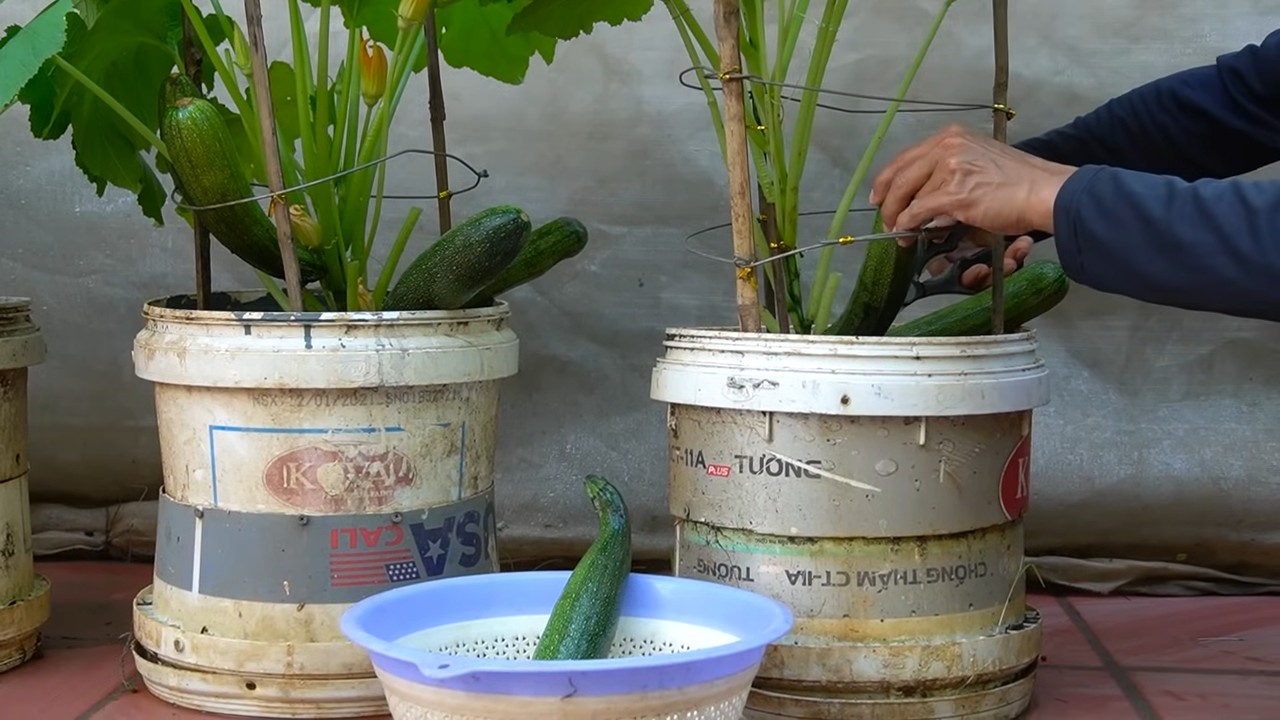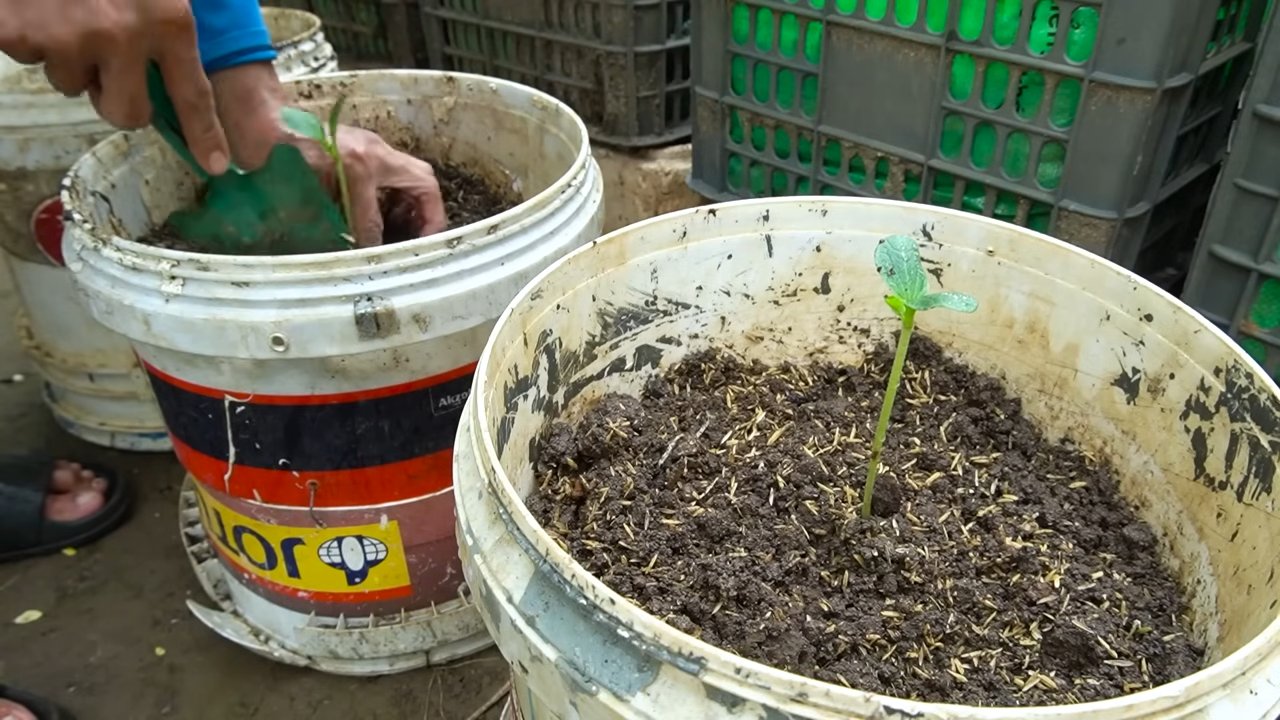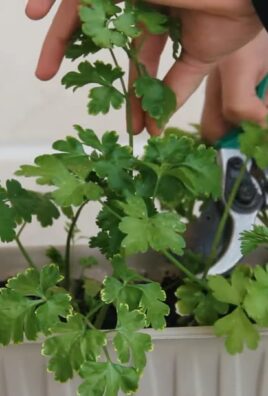Zucchini backyard harvest tips are essential for any gardener dreaming of a summer filled with delicious, homegrown goodness! Have you ever been overwhelmed by a sudden explosion of zucchini, not knowing what to do with them all? I know I have! It’s a common, almost comical, experience for many home gardeners. But fear not, because this article is your ultimate guide to maximizing your zucchini harvest and preventing that “zucchini overload.”
Zucchini, a member of the squash family, has a fascinating history. Originating in the Americas, it wasn’t until Italian immigrants brought it to Europe that it truly flourished. Now, it’s a staple in gardens worldwide, prized for its versatility and ease of growth. But that ease can quickly turn into a challenge when those zucchinis start appearing faster than you can say “ratatouille!”
That’s where these zucchini backyard harvest tips come in handy. We’ll explore the best time to harvest, how to properly store your bounty, and even some creative ways to use those extra zucchinis. Imagine enjoying fresh zucchini bread, grilled zucchini skewers, or even zucchini noodles all season long, thanks to a few simple tricks. So, let’s dive in and unlock the secrets to a successful and satisfying zucchini harvest!

Zucchini Harvest: How to Turn Your Garden into a Zucchini Paradise!
Hello dear garden friends! I love harvesting fresh vegetables from my own garden, and zucchini are right at the top of the list. They are not only super versatile in the kitchen but also relatively easy to grow. But to ensure you really get a bountiful harvest, I’ve put together a few tips and tricks for you. Let’s get started!
The Basics: When is a Zucchini Ripe?
Before we start harvesting, we naturally need to know when the zucchini is actually ripe. Here are a few signs you should look out for:
- Size: The ideal size depends on the variety, but in general, it’s better to harvest them a little smaller than to let them get too big. Giant zucchinis can become woody and watery. a length of 15-20 cm (6-8 inches) is often a good guideline.
- Color: The color should be uniform and intense, depending on the variety, dark green, light green, or yellow.
- Hardness: The skin should be firm, but not rock-hard. You should be able to press into it slightly with your fingernail.
- Shine: A ripe zucchini often has a slight sheen.
- Stem: The stem should still look green and juicy.
The Right Harvesting Technique: How to Do It Gently
Now that we know what to look for, we can start harvesting. Here is a step-by-step guide:
- The right tool: You need a sharp knife or garden shears. A dull blade can damage the plant.
- Cut the stem: Cut the stem about 5-8 cm (2-3 inches) above the fruit. This prevents rot from entering the plant.
- Be careful: Zucchinis are delicate. Proceed with caution to avoid damaging the fruit.
- Harvest regularly: Harvest your zucchinis regularly, preferably every few days. This encourages the formation of new fruits.
Avoiding Common Mistakes: What You Shouldn’t Do
There are a few mistakes you should avoid when harvesting zucchini:
- Waiting too long: As mentioned, zucchinis that are too large are often not as tasty.
- Pulling on the stem: This can damage the plant.
- Harvesting in the rain: Wet zucchinis are more susceptible to rot.
- Damaging the plant: Be careful not to break off any leaves or shoots.
Zucchini Overload? How to Prevent Overproduction
Zucchinis are known for producing vast quantities of fruit in a short time. Here are a few tips on how to avoid a zucchini flood:
- Harvest early: Harvest the zucchinis as soon as they reach the right size, even if you can’t use them immediately. You can store them in the refrigerator or freeze them.
- Plant fewer plants: Think carefully about how many zucchinis you really need. Often, one plant per person is enough.
- Grow different varieties: Some varieties are more productive than others. Inform yourself before planting.
- Remove blossoms: If you notice you have too many zucchinis, you can remove some blossoms before they develop into fruits.
Storing Zucchini Correctly: How to Keep Them Fresh Longer
You’ve harvested, but don’t have time to process the zucchinis right away? No problem! Here are a few storage tips:
- In the refrigerator: Wrap the zucchinis in a damp cloth and store them in the vegetable crisper of the refrigerator. They will stay fresh for up to a week this way.
- Freezing: Cut the zucchinis into slices or cubes, blanch them briefly in boiling water, and then freeze them. They will keep for several months this way.
- Pickling: You can also pickle zucchinis in vinegar or oil. This is a great way to preserve them and create a delicious snack at the same time.
- Drying: Dried zucchinis are a great ingredient for soups and stews.
Zucchini Recipes: Inspiration for Your Kitchen
Now that you have a bountiful zucchini harvest, you’ll of course need some delicious recipes. Here are a few of my favorites:
- Zucchini soup: A classic! Simple, quick, and super delicious.
- Zucchini fritters: Perfect as a side dish or snack.
- Zucchini spaghetti: A healthy and tasty alternative to traditional spaghetti.
- Stuffed zucchini: A hearty dish that can be prepared in advance.
- Zucchini cake: Yes, you can even bake a cake with zucchini! It makes it particularly moist.
- Zucchini relish: A great side for grilling or for burgers.
Bonus Tip: Using Zucchini Blossoms
Did you know that you can also eat zucchini blossoms? They are a delicacy! You can fry them, stuff them, or simply add them to salads. However, make sure to only harvest the male blossoms, as the female blossoms bear the fruit. You can recognize the male blossoms by the fact that they do not have a small fruit at their base.
Step-by-Step Guide for Stuffed Zucchini Blossoms:
- Prepare blossoms: Gently collect the male zucchini blossoms in the morning when they are open. Remove the stamen in the middle.
- Prepare the filling: Mix ricotta, Parmesan, chopped herbs (e.g., basil, parsley), garlic, and a little lemon zest. Season with salt and pepper.
- Fill the blossoms: Carefully fill the blossoms with the ricotta mixture.
- Prepare the breading: Whisk an egg with a little milk. Put flour on a separate plate.
- Bread the blossoms: First, coat the stuffed blossoms in flour, then in the egg.
- Fry: Heat oil in a pan. Fry the blossoms until golden brown.
- Serve: Let the fried blossoms drain on paper towels and serve them warm.
Optimizing Zucchini Cultivation: Tips for an Even Better Harvest
Here are a few additional tips that can help you optimize your zucchini harvest:
- The right location: Zucchinis need a sunny spot with well-draining soil.
- Water regularly: Zucchinis need a lot of water, especially during fruit formation. It’s best to water them in the morning so the leaves can dry.
- Fertilize: Fertilize your zucchinis regularly with an organic fertilizer.
- Mulch: A layer of mulch helps to keep the soil moist and suppress weeds.
- Combat pests: Watch out for pests like slugs or aphids and combat them with natural means if necessary.
- Prevent diseases: Ensure good air circulation for the plants to prevent fungal diseases.
Zucchini Varieties: Find Your Favorite
There are countless zucchini varieties, each with its own pros and cons. Here are a few popular ones:
- Black Beauty: A classic, dark green variety with good flavor.
- Gold Rush: A yellow variety that is particularly decorative.
- Costata Romanesco: A ribbed, Italian variety with intense flavor.
- Ronde de Nice: (Round of Nice) A round variety, great for stuffing.

Conclusion
So, there you have it! Transforming your abundant zucchini harvest into delicious and long-lasting treats is not only achievable but also incredibly rewarding. This DIY trick, focusing on preserving your zucchini through simple methods like freezing, pickling, and dehydrating, is a game-changer for anyone facing a zucchini overload. No more zucchini bread for every meal (unless you really want to, of course!).
Why is this a must-try? Because it tackles the core problem of seasonal abundance. Zucchini, bless its prolific heart, often gives us more than we can possibly consume fresh. Letting it go to waste is a culinary tragedy, and buying zucchini out of season is often expensive and less flavorful. This DIY approach empowers you to enjoy the taste of summer all year round, reduces food waste, and saves you money. Plus, the satisfaction of knowing you preserved your own garden bounty is simply unmatched.
But the beauty of this DIY approach lies in its adaptability. Feel free to experiment with variations to suit your taste. For freezing, consider shredding the zucchini before freezing for easier use in baking. For pickling, add different spices like mustard seeds, dill, or red pepper flakes to customize the flavor profile. Dehydrated zucchini chips can be seasoned with everything from salt and pepper to chili powder and parmesan cheese. The possibilities are endless!
Don’t be afraid to get creative and make this process your own. The key is to start with fresh, high-quality zucchini and follow the basic principles of each preservation method. With a little practice, you’ll be a zucchini preservation pro in no time.
We wholeheartedly encourage you to try these DIY zucchini preservation tricks. It’s a fun, educational, and ultimately delicious way to make the most of your garden harvest. And most importantly, don’t keep your newfound knowledge to yourself! Share your experiences, tips, and variations with us in the comments below. We’d love to hear how you’re making the most of your zucchini bounty. Let’s build a community of zucchini-loving, preservation-savvy gardeners!
Ready to tackle that zucchini mountain?
Remember, preserving your zucchini is not just about saving food; it’s about connecting with the seasons, reducing waste, and enjoying the fruits (or vegetables!) of your labor all year round. So grab your zucchini, your favorite preservation method, and get started! You won’t regret it.
Frequently Asked Questions (FAQ)
Here are some frequently asked questions about preserving your zucchini harvest, designed to help you succeed in your DIY endeavors:
Q: How do I know when my zucchini is ready to harvest for preservation?
A: The ideal size for zucchini intended for preservation depends on the method you plan to use. For freezing and dehydrating, smaller to medium-sized zucchini (6-8 inches long) are generally best, as they have fewer seeds and a more tender texture. For pickling, smaller zucchini (4-6 inches) are preferable, as they will absorb the pickling brine more effectively and maintain a firmer texture. Avoid harvesting zucchini that are overly large or have tough skins, as these will not preserve as well. The skin should be smooth and free of blemishes.
Q: What’s the best way to prepare zucchini for freezing?
A: There are several ways to prepare zucchini for freezing, depending on how you plan to use it later. You can freeze it raw, blanched, or shredded.
* Raw: Wash, trim the ends, and dice or slice the zucchini. Spread it out on a baking sheet lined with parchment paper and freeze for a few hours until solid. This prevents clumping. Then, transfer the frozen zucchini to freezer bags or containers. This method is best for zucchini that will be used in soups or stews.
* Blanched: Blanching helps to preserve the color, texture, and nutrients of the zucchini. Wash, trim, and dice or slice the zucchini. Blanch it in boiling water for 1-2 minutes, then immediately plunge it into an ice bath to stop the cooking process. Drain well, spread on a baking sheet, freeze until solid, and then transfer to freezer bags or containers. This method is suitable for zucchini that will be used in cooked dishes.
* Shredded: Shredded zucchini is ideal for baking. Wash and shred the zucchini. Squeeze out any excess moisture using a clean kitchen towel or cheesecloth. Measure the shredded zucchini into portions (e.g., 1 cup) and place each portion in a freezer bag. This makes it easy to grab the exact amount you need for your favorite zucchini bread recipe.
Q: How long can I store frozen zucchini?
A: Properly frozen zucchini can last for 8-12 months in the freezer. Be sure to use freezer-safe bags or containers to prevent freezer burn. Label the bags with the date and contents so you know when to use them.
Q: What are some good recipes for using frozen zucchini?
A: Frozen zucchini can be used in a variety of recipes, including:
* Zucchini bread, muffins, and cakes
* Soups and stews
* Casseroles
* Frittatas and omelets
* Smoothies (shredded zucchini adds a boost of nutrients)
Q: What kind of vinegar should I use for pickling zucchini?
A: White vinegar or apple cider vinegar are the most common choices for pickling zucchini. White vinegar has a neutral flavor that allows the spices to shine through, while apple cider vinegar adds a slightly sweeter and more complex flavor. Avoid using balsamic vinegar or other flavored vinegars, as they may not be acidic enough to properly preserve the zucchini.
Q: How long does it take to pickle zucchini?
A: Pickled zucchini typically needs to sit for at least 24 hours before it’s ready to eat, but the flavor will continue to develop over time. For the best flavor, allow the zucchini to pickle for at least a week before enjoying it.
Q: How long does pickled zucchini last?
A: Properly canned pickled zucchini can last for up to a year in a cool, dark place. Once opened, store the pickled zucchini in the refrigerator and consume it within a few weeks.
Q: What’s the best way to dehydrate zucchini?
A: The best way to dehydrate zucchini is to use a food dehydrator. Wash and slice the zucchini into thin, even rounds (about 1/8 inch thick). You can use a mandoline slicer for consistent results. Arrange the zucchini slices in a single layer on the dehydrator trays, making sure they don’t overlap. Dehydrate at 135°F (57°C) for 6-8 hours, or until the zucchini is leathery and crisp.
Q: Can I dehydrate zucchini in the oven?
A: Yes, you can dehydrate zucchini in the oven, but it will take longer and require more attention. Preheat your oven to the lowest possible setting (ideally below 200°F or 93°C). Slice the zucchini as described above and arrange it on baking sheets lined with parchment paper. Prop the oven door open slightly to allow moisture to escape. Dehydrate for 4-6 hours, or until the zucchini is leathery and crisp, flipping the slices halfway through.
Q: How do I store dehydrated zucchini?
A: Store dehydrated zucchini in an airtight container in a cool, dark, and dry place. Properly stored dehydrated zucchini can last for several months.
Q: What can I do with dehydrated zucchini?
A: Dehydrated zucchini can be enjoyed as a healthy snack, added to soups and stews, or ground into a powder and used as a thickener or seasoning. You can also rehydrate it by soaking it in water for a few minutes before using it in recipes.
Q: Can I use zucchini flowers for preservation?
A: Yes! Zucchini flowers are edible and can be preserved. The most common method is to batter and fry them fresh, but you can also dehydrate them for use in teas or as a garnish. To dehydrate, gently wash and dry the flowers, then arrange them on dehydrator trays and dehydrate at a low temperature until crisp.
Q: What if my zucchini is bitter?
A: Sometimes, zucchini can develop a bitter taste due to stress during growth (e.g., inconsistent watering, extreme temperatures). If your zucchini is bitter, it’s best to discard it, as the bitterness won’t disappear during preservation.
Q: Is there anything else I should know before preserving my zucchini?
A: Always use fresh, high-quality zucchini for preservation. Wash the zucchini thoroughly before processing. Follow the instructions carefully for each preservation method to ensure food safety. And most importantly, have fun! Preserving your zucchini harvest is a rewarding experience that will allow you to enjoy the taste of summer all year round. Don’t be afraid to experiment and find what works best for you.





Leave a Comment